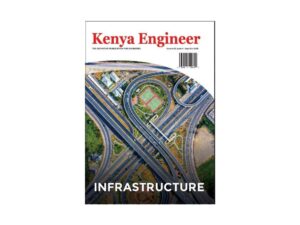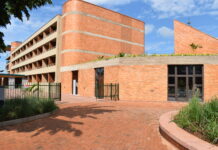
Last Updated 2 days ago by Kenya Engineer
Kenya’s infrastructure landscape is on the verge of a major transformation with the planned Nairobi–Nakuru–Mau Summit Highway project. This ambitious initiative, valued at approximately Sh170 billion, will significantly enhance transport efficiency, safety, and economic connectivity along one of the busiest road corridors in East Africa.
A Lifeline for the Northern Corridor
The Nairobi–Nakuru–Mau Summit highway forms a crucial part of the Northern Corridor, which links the port of Mombasa to Uganda, Rwanda, South Sudan, and the Democratic Republic of Congo (DRC). The highway currently handles a high volume of traffic, serving thousands of vehicles daily—including heavy trucks transporting goods inland and returning with exports to the port.
With increasing congestion, frequent accidents, and deteriorating road conditions, upgrading the highway has become a national priority.
Key Project Highlights
According to details from The Star Digital, the A8 road project will stretch from Rironi to Mau Summit, covering 175 kilometers. The A8 South project, branching through Maai Mahiu, will span an additional 56.8 kilometers from Rironi to Naivasha.
Here’s a breakdown of the major developments:
-
Rironi–Mau Summit Section (175 km)
The main A8 highway will be expanded and modernized to meet international standards, accommodating increased traffic and improving travel time between Nairobi and western Kenya. -
Rironi–Naivasha Section via Maai Mahiu (56.8 km)
This alternative route (A8 South) will be upgraded into a four-lane carriageway, providing an additional high-capacity link to Naivasha and the Naivasha Inland Container Depot (ICD). -
Naivasha–Nakuru Upgrade
This segment will be expanded into a dual six-lane carriageway, a major leap in capacity that will ease traffic flow and reduce travel time across this congested corridor. -
Nakuru Urban Section
The road through Nakuru town will feature a four-lane dual carriageway built on a viaduct, minimizing interference with urban traffic while improving safety for pedestrians and motorists. -
Nakuru–Mau Summit Section
This stretch will be upgraded to a dual four-lane highway, improving the connection to the western region and beyond.
Tolling and Financing Model
The project will be developed under a Public-Private Partnership (PPP) model. A consortium led by the China Road and Bridge Corporation (CRBC) has been awarded the Sh170 billion deal to design, build, finance, operate, and maintain the highway for a concession period before transferring it back to the government.
Motorists will pay a base toll rate of Sh8 per kilometer to use the highway. The tolling system will be implemented through six toll stations between Rironi and Mau Summit, with two additional toll stations along the Rironi–Maai Mahiu–Naivasha route. The tolls are expected to help the private operator recover investment costs while maintaining the road to high international standards.
Economic and Regional Impact
The upgraded Nairobi–Nakuru–Mau Summit highway is expected to:
-
Reduce travel time between Nairobi and Nakuru by nearly half.
-
Lower vehicle operating costs through smoother, faster traffic flow.
-
Enhance road safety by minimizing congestion and accident-prone bottlenecks.
-
Stimulate economic growth along the corridor by improving logistics for trade and tourism.
-
Create employment opportunities during construction and operation phases.
-
Support regional integration within the East African Community (EAC) by improving cross-border trade routes.
Environmental and Social Considerations
The project will incorporate modern engineering practices aimed at minimizing environmental impact, including drainage improvements, noise barriers in residential areas, and proper waste management during construction. Stakeholder consultations will also ensure fair compensation for affected landowners and promote local community engagement.
A Milestone for Modern Infrastructure
Once completed, the Nairobi–Nakuru–Mau Summit highway will join Kenya’s growing list of world-class infrastructure projects, complementing recent developments such as the Nairobi Expressway and the Standard Gauge Railway (SGR). It represents a strategic investment in Kenya’s long-term vision to position itself as a regional transport and logistics hub.
























